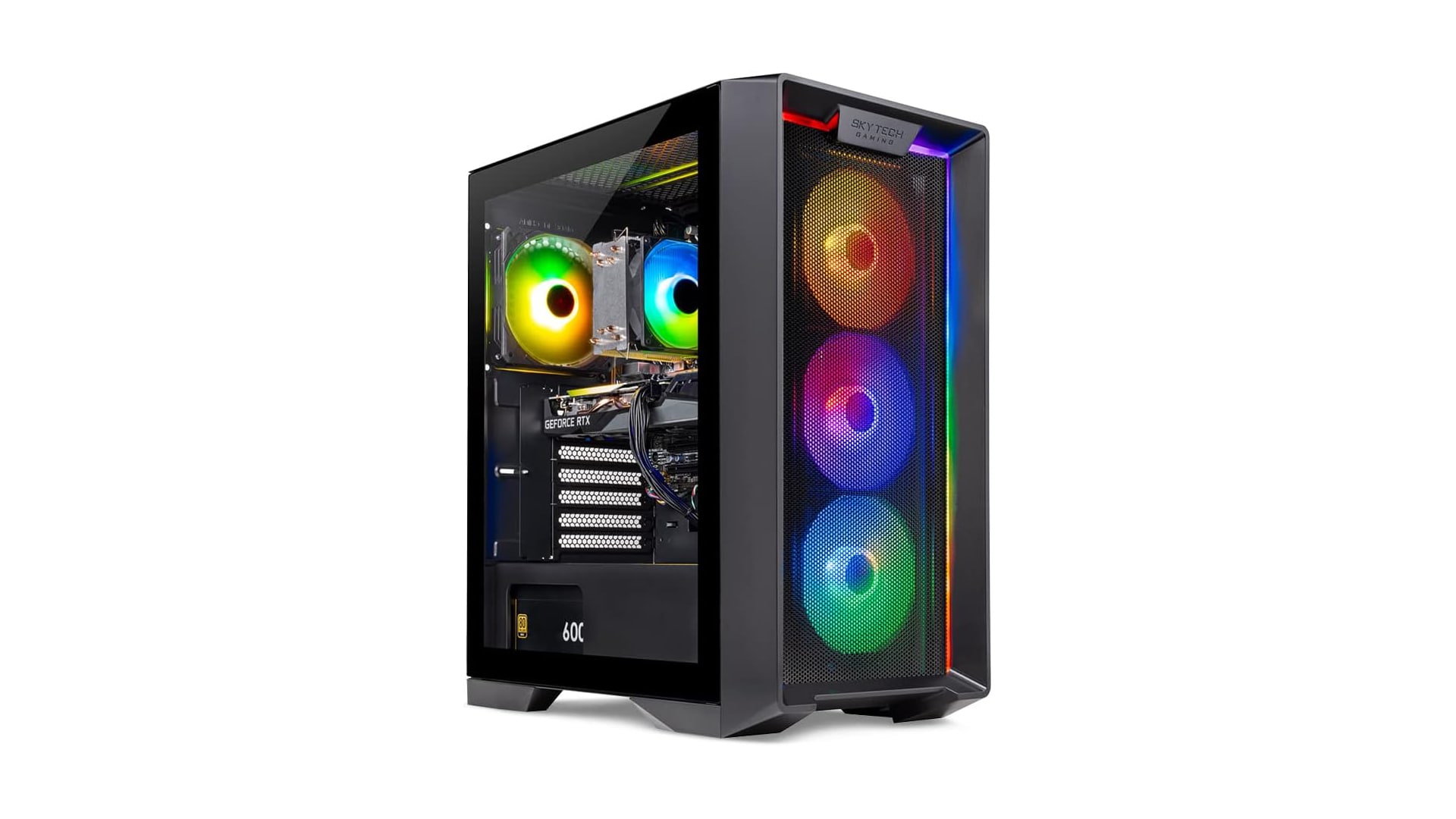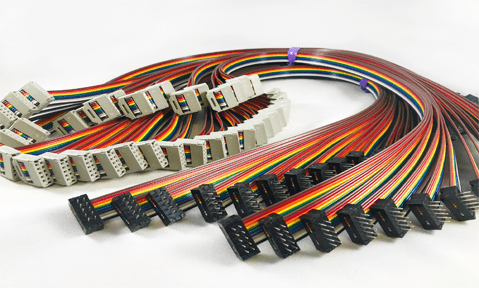When it comes to building a PC, components like processors, graphics cards, and RAM often steal the spotlight. But today, let’s shine a light on the unsung hero of every computer build: the humble computer case.
More Than Just a Box

At first glance, a computer case might seem like nothing more than a metal box to house your components. But oh, how wrong that assumption would be! A well-designed case is the foundation of a great PC build, offering benefits that go far beyond mere aesthetics.
Guardian of Your Gear
Think of your computer case as a fortress protecting your valuable components. It shields your hardware from:
- Dust and debris
- Accidental spills
- Physical impacts
But that’s not all. A good case also provides an organized interior, with cable management features that keep your build neat and tidy. This organization isn’t just for looks – it can actually improve airflow and make future upgrades a breeze.
The Cool Factor (Literally)
Speaking of airflow, let’s talk about one of the most critical functions of a computer case: temperature management.
A well-designed case acts like the lungs of your PC, facilitating proper airflow to keep your components cool. This is crucial because:
- Cool components perform better
- Lower temperatures extend the lifespan of your hardware
- Efficient cooling can even allow for better overclocking potential
Many modern cases come with pre-installed fans, and support for additional cooling options like liquid cooling radiators. Some even feature innovative designs like mesh fronts or negative pressure systems to optimize airflow.
Express Yourself

Let’s face it – for many of us, our PCs are more than just tools. They’re a form of self-expression. Computer cases have evolved from boring beige boxes to works of art. Whether you prefer:
- Sleek and minimalist designs
- RGB-lit showstoppers
- Compact and understated builds
There’s a case out there to match your style. Some enthusiasts even go as far as modding their cases to create truly unique builds.
Size Matters
When it comes to computer cases, one size definitely doesn’t fit all. The right case size depends on your:
- Component choices
- Available space
- Future upgrade plans
From tiny Mini-ITX cases that can fit in a backpack to massive full-tower cases that can house multiple graphics cards and elaborate water-cooling setups, the options are endless. Choose wisely, as your case will determine what components you can use now and in the future.
Futureproofing Your Build
Speaking of the future, a quality computer case is an investment that can last through multiple PC upgrades. A well-chosen case can:
- Accommodate larger components as technology evolves
- Provide flexibility for different cooling solutions
- Offer features like tool-less design for easy upgrades
When it comes to building a PC, many people focus on selecting the best components such as a powerful CPU, graphics card, and plenty of RAM. However, one component that often gets overlooked is the computer case. While it may not be as flashy or exciting as other components, the computer case plays a crucial role in the overall performance and functionality of your PC build.
Computer cases are the unsung heroes of your PC build, providing a safe and secure enclosure for all of your components. Not only do they protect your valuable hardware from dust, debris, and other potential threats, but they also help to improve airflow and keep your system running cool and efficiently.
When choosing a computer case, there are a few key factors to consider. First and foremost, you’ll want to make sure that the case is compatible with your motherboard size and form factor. This will ensure that all of your components fit properly and are easily accessible for maintenance and upgrades.
Additionally, you’ll want to consider the cooling options available in the case. Some cases come with built-in fans or liquid cooling options, while others may require you to install your own cooling solutions. Proper airflow is essential for keeping your components running at optimal temperatures and preventing overheating.
Finally, aesthetic considerations are important as well. Computer cases come in a variety of styles, colors, and designs, so you’ll want to choose one that reflects your personal preferences and fits in with the overall aesthetic of your setup.
In conclusion, while computer cases may not be the most glamorous or exciting part of your PC build, they are essential for protecting your components and keeping your system running smoothly. So next time you’re planning a PC build, make sure to give your computer case the attention it deserves. Trust us, it’s the unsung hero of your
Computer cases are often overlooked components in the world of PC building, yet they play a crucial role in the functionality, performance, and aesthetics of a computer system. Serving as the unsung heroes of any PC build, computer cases not only house and protect the delicate internal components but also contribute significantly to airflow, cooling efficiency, and cable management. In this comprehensive guide, we will delve into the importance of computer cases in PC builds, explore the key factors to consider when choosing the right case, discuss the various types of cases available, and provide tips for maximizing airflow, organizing cables, and customizing the look of your build. Join us as we uncover the vital role that computer cases play in shaping the overall performance and appearance of your PC setup.
1. Importance of Computer Cases in PC Builds
The Role of a Computer Case in Protecting and Securing Components

Your computer case is like the superhero cape that shields your precious components from dust, bumps, and spills. Think of it as the protective armor for your PC’s delicate innards.
Impact of Computer Case on System Performance and Longevity
Choosing the right computer case isn’t just about looks – it can also affect your system’s performance and lifespan. A well-ventilated case with proper cable management can keep your components cool and happy, preventing overheating meltdowns and premature aging.
2. Factors to Consider When Choosing a Computer Case
Size and Form Factor Compatibility with Components
Size matters when it comes to computer cases. Make sure your chosen case fits your motherboard, GPU, and other components like a well-tailored suit – no unsightly bulges or cramped corners allowed.
Expansion and Upgrade Options
A good computer case should have room to grow with your PC dreams. Look for features like extra drive bays, PCIe slots, and easy access for painless upgrades down the line.
Noise Reduction and Sound Dampening Features
Nobody likes a noisy neighbor, especially when that neighbor is your PC. Opt for a case with noise-reducing materials and design elements to keep your rig whisper-quiet.
3. Types of Computer Cases: A Comprehensive Guide

Full Tower, Mid Tower, and Mini Tower Cases
It’s like a Goldilocks tale – full towers for spacious luxury, mid towers for the perfect balance, and mini towers for compact cuteness. Choose your case size wisely to match your needs and available space.
Compact Cases for HTPC and Small Form Factor Builds
For those who prefer pint-sized powerhouses, compact cases are here to save the day. Perfect for HTPCs or setups where space is at a premium, these cases pack a punch in a smaller package.
Showcase and Open-Air Cases for Enthusiasts
If you’re a PC enthusiast who wants to show off your hardware like a prized trophy, showcase and open-air cases are your stage. Just be prepared for the inevitable dusting duty.
4. Maximizing Airflow and Cooling in Your PC Build
Fan Placement and Selection for Optimal Air Circulation
Airflow is key to a happy PC – strategically place fans in your case like a master chess player, ensuring cool air flows in and hot air flows out for optimal cooling efficiency.
Water Cooling Solutions and Radiator Support
For those looking to take cooling to the next level, water cooling is the cool kid on the block. With radiator support in your case, you can dive into the watery world of liquid cooling for superior temperature control. Just don’t spring a leak!
5. Cable Management Tips for a Clean and Organized Build
Cable management may not sound like the most thrilling part of building a PC, but trust us, it’s crucial for a tidy and efficient setup. Wrangling those cables not only makes your computer look more appealing but also improves airflow for better performance. Invest in zip ties, cable clips, and Velcro straps to keep things neat and organized. Route your cables strategically, keeping them away from fans and components that generate heat. Your future self will thank you when you need to troubleshoot or upgrade your system!
6. Customization Options and Aesthetics in Computer Cases
RGB Lighting and Tempered Glass Panels
Want your PC to look as cool as it performs? RGB lighting and tempered glass panels are your best friends. RGB lighting allows you to jazz up your system with a spectrum of colors, while tempered glass panels showcase your components in all their glory. Whether you prefer a subtle glow or a disco party vibe, the options are endless to make your PC shine bright.
Modular Features for Personalized Builds
Not satisfied with a cookie-cutter PC case? Look for ones with modular features that let you customize to your heart’s content. Swap out panels, add extra fans or cooling systems, and rearrange components to create a truly unique build that reflects your personality. The joy of PC building is in the details, so don’t be afraid to get creative and make your setup one-of-a-kind.
7. The Future of Computer Case Design and Innovation
As technology evolves, so do computer cases. The future holds exciting possibilities for innovative designs that prioritize both form and function. We can expect to see advancements in materials, such as carbon fiber and aluminum alloys, that offer durability without compromising on style. Features like tool-less installation, integrated cable management, and improved airflow will continue to enhance the building experience. With virtual reality, AI integration, and gaming becoming more immersive, computer cases will adapt to meet the demands of the modern user. Stay tuned for what’s next in the world of computer case design – it’s bound to be revolutionary!In conclusion, computer cases are the backbone of a well-functioning and visually appealing PC build. By understanding the significance of selecting the right case, optimizing airflow and cooling, and paying attention to cable management, builders can elevate their computing experience to new heights. With the ever-evolving landscape of computer case design and innovation, the future promises even more exciting possibilities for creating personalized and efficient PC setups. Remember, the next time you embark on a PC build, give your computer case the attention it deserves as the unsung hero that holds your system together.
FAQs
1. How important is the choice of a computer case in a PC build?
The computer case is crucial in protecting components, optimizing airflow for cooling, and contributing to the overall aesthetics of the build. Choosing the right case can significantly impact the performance and longevity of your system.
2. What factors should I consider when selecting a computer case?
Factors to consider include compatibility with component sizes, expansion options, noise reduction features, and cable management capabilities. It’s essential to choose a case that meets your specific needs and preferences.
3. Are there different types of computer cases available?
Yes, there are various types of computer cases such as full tower, mid tower, compact, showcase, and open-air cases. Each type offers unique features and benefits suited for different build requirements and design preferences.
4. How can I improve airflow and cooling in my PC build?
You can improve airflow and cooling by strategically placing fans, utilizing water cooling solutions, ensuring proper cable management to avoid obstruction, and keeping the case’s intake and exhaust areas clear of obstructions. Maintaining optimal airflow is key to preventing overheating and maintaining system performance.






